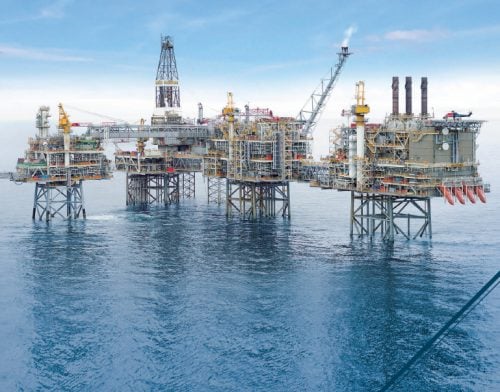The Chinese company Sinooc announced its strategy for 2023 on Wednesday, January 11 (2023), through which it aims to raise the goal of oil and gas production and capital spending, amid expectations that 9 new projects will start operating during the current year.
The company said total capital expenditure for the current year will range from 100 billion yuan ($14.7 billion) to 110 billion yuan, the second highest after spending 105.7 billion yuan in 2014.
(Chinese Yuan = 0.15 USD)
Exploration capital expenditures will account for approximately 18%, development about 59%, and production 21% of the total, according to the information of the specialized energy platform, quoting Bloomberg Agency.
At the same time, China’s Sinooc announced that it had raised the production target for 2023 by about 8%, to range between 650 and 660 million barrels of oil equivalent, compared to 620 million barrels in 2022.
China is the largest importer of oil, gas and coal in the world; So enhancing energy security is one of the priorities in Chinese President Xi Jinping’s plan.
Sinouk plans
China’s Sinooc’s spending plan follows profits nearly doubling in the third quarter, after energy price hikes triggered by Russia’s invasion of Ukraine.
It also indicates more optimism about the speed of China’s recovery from the current wave of infections crippling the economy after the sudden shifts in policies and the abandonment of the “zero Covid” policy in late 2022.
Accordingly, SINOC expected the Chinese economy to grow by 5.1% during the current year (2023).
Domestic demand for crude oil has also recovered to pre-pandemic levels, amid expectations that demand will continue to rise.
In addition, the Chinese company expected global oil prices to remain above $80 per barrel during 2023.
increase production
China’s state-owned Sinopec Corporation produced nearly 620 million barrels of oil equivalent in 2022, exceeding its target of 600-610 million barrels of oil equivalent.
During an event held last year (2022), the company expected to increase production to 650 million barrels in 2023 and 690 million barrels in 2024, with the continued flow of investments.
This is supported by the company’s huge effort in new discoveries in Chinese waters. This raised Sinopec’s share in national production compared to PetroChina and Sinopec.
Last week, the China National Offshore Oil Corporation, the parent company of Sinooc, said that it had increased domestic production of crude oil by about 7% in 2022 to 52.04 million tons.
The increases accounted for more than 60% of the total oil production growth in China.
This prompted the company to raise the ceiling of its ambitions to approximately 700 million barrels in 2024, and 740 million barrels in 2025, pledging to maintain the stability of crude oil production and increase natural gas production, according to what it announced on Wednesday, January 11 (2023).
The company also indicated that it has started operating 9 new projects, which include its local projects and its international projects, such as Meru 2 in Brazil and Bayara in Guyana.

Under its stated strategy to enhance its natural gas portfolio, SINOC is accelerating the development of large domestic discoveries, such as Baodao 21-1 in the South China Sea, as well as gas fields in global projects. It made a new natural gas discovery in Gabon, and aims to develop condensate and gas. prostitutes.
clean energy
On the other hand, China’s Sinooc is trying to cement its position in the clean energy sector, which is experiencing a huge boom in the country, by applying its offshore expertise to wind energy projects.
The company’s chief financial officer, Shi Wetjie, said the company will stick to its plan to allocate more than 10% of its capital expenditures to renewable energy sources by 2025.
Although Sinoco is the smallest of the 3 state oil companies in China, it is the first to announce spending plans, and full-year earnings are scheduled for late March (2023).
The company also pledged to maintain the dividend payout ratio at 40% or higher, through 2024.
related topics..
Also read..

Leave a Reply